The Complete Guide to Advertising Platform Integrations and Conversion Tracking: Research-Backed Strategies for 2025
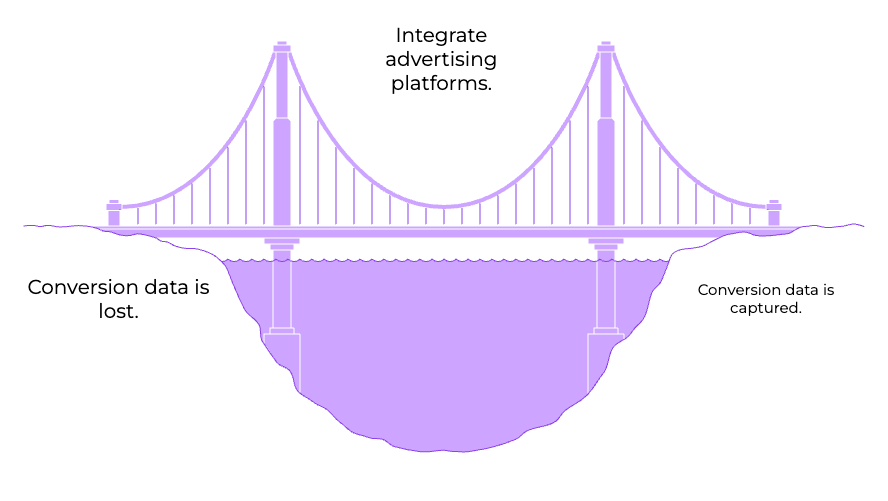
Global digital ad spend is expected to hit a staggering $798.7 billion in 2025 a 7.9% jump from the year before. But here’s the kicker: despite pouring billions into campaigns, businesses are still flying blind. As much as 75% of their conversion data is slipping through the cracks, lost to disjointed tracking tools, tightening privacy laws, and outdated attribution models that simply can’t keep up. This comprehensive guide examines the current state of advertising platform integrations, provides research-backed data on conversion optimization, and reveals actionable strategies that most marketers have yet to discover.
The Hidden Crisis: Data Loss in Modern Marketing
The Scale of the Problem
Recent studies paint a troubling picture: 68% of merchants are losing sales because support is too slow to respond, and nearly half of Shopify stores 47% are battling unreliable tracking data. Even the automotive sector, boasting the highest Google Ads conversion rate at 12.96%, isn’t immune. It still wrestles with deep-rooted attribution problems. This isn’t just a technical hiccup, it’s a full-blown crisis in how digital marketing performance is measured and understood.
Financial Impact of Poor Attribution
Research from leading attribution modeling studies indicates that last-touch attribution suggests budget allocations that yield 10%-12% less revenue than optimal allocation strategies. Conversely, algorithmic attribution models propose allocations that could yield a 21% revenue increase over current industry standards. This represents billions in lost revenue across the global advertising ecosystem.
The Privacy-First Reality
With iOS 14+ changes and browser restrictions, marketers are experiencing 10-30% data loss due to ad blockers and intelligent tracking prevention. The implementation of Link Tracking Protection in iOS 17 has further complicated attribution by automatically removing user-identifiable tracking parameters from URLs. These changes fundamentally alter how conversion tracking must be approached in 2025.
Advanced Attribution Models: Beyond Basic Tracking

The Evolution of Attribution Science
Multi-touch attribution research has evolved significantly, with probabilistic models becoming the most frequently utilized methods, with Markov Chains as the prevailing technique. Recent academic research demonstrates that Bagged Logistic Regression (BLR) and Support Vector Machine (SVM) models determine attribution more accurately than traditional heuristic methods, though SVM models may be computationally intensive for real-time applications.
Machine Learning Attribution Performance
Studies comparing attribution models reveal critical insights:
- Random Forest models underperformed compared to other machine learning approaches, showing discrepancy between in-sample and out-of-sample prediction accuracy, indicating potential overfitting issues
- Shapley Value (SHAP) implementation for post-hoc interpretability performed well despite significant computation time requirements
- Data-driven attribution models using machine learning show superior accuracy compared to rule-based systems, though they require substantial datasets for optimal performance
Attribution Model Effectiveness by Channel
Research analyzing channel attribution estimates reveals that firm-initiated channels receive greater attribution when using conversion value as the attribution measure, while customer-initiated channels receive smaller attribution weights. This finding has significant implications for budget allocation across different marketing channels.
Server-Side vs. Client-Side Tracking: The Technical Revolution
Performance and Accuracy Differentials
Comprehensive analysis of tracking methodologies shows that server-side tracking offers significantly improved data quality compared to client-side approaches. While client-side tracking suffers from browser restrictions and ad blocker interference, server-side implementations bypass these limitations through first-party data collection methods.
Technical Implementation Statistics
Current implementation data reveals:
- Server-side tracking processes data outside the browser, providing better control over data collection and processing
- Hybrid tracking methods slightly compromise data accuracy due to partial browser reliance but offer easier implementation than pure server-side approaches
- GDPR/CCPA compliance is more readily achieved through server-side implementations, as data can be modified before reaching final destinations
Infrastructure Requirements
Advanced server-side implementations require robust infrastructure. Platforms built on Apache Kafka and AWS Lambda can process millions of events per second with sub-second latency. This scalability is essential for enterprise-level attribution accuracy and real-time optimization capabilities.
Platform-Specific Conversion Optimization Data
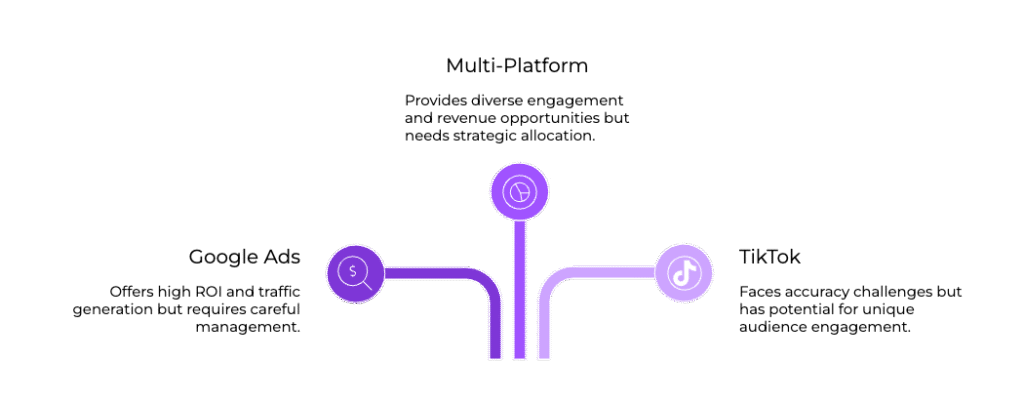
Google Ads Performance Benchmarks
Current Google Ads statistics reveal:
- Average conversion rate across all industries: 6.96%
- PPC campaigns generate 2x more traffic than SEO
- Businesses can expect $2-$8 return for every $1 invested in Google Ads, representing 200%-800% ROI
- Pay-per-click advertising campaigns average 2.55% conversion rates across all platforms
Multi-Platform Performance Analysis
Research across advertising platforms shows:
- Video ads outperform other formats by 120% in engagement rates
- Social media ads account for nearly 40% of total digital ad spend
- Mobile advertising comprises 70% of total digital ad revenue
- Programmatic advertising accounts for 90% of all digital display ad purchases
TikTok Pixel Accuracy Challenges
Specific research on TikTok pixel implementation reveals significant accuracy issues:
- TikTok pixel data reporting experiences delays of 24-48 hours
- JavaScript failures and cookie hindrances commonly disrupt TikTok pixel functionality
- Apple’s iOS 14+ App Tracking Transparency (ATT) frameworks significantly impact conversion tracking accuracy for TikTok campaigns
Real-World Integration Case Studies and ROI Data

E-commerce Platform Migration Results
Shopify integration case studies demonstrate substantial performance improvements:
- Aje’s conversion rates increased by 135% within weeks of migrating to Shopify Plus
- Kick Games revenue increased from £2 million to £50 million after adopting integrated POS systems
- Florentine Kitchen Knives checkout process sped up by 50% through platform optimization
- DARCHE’s B2B sales projected to increase 3x year-over-year in 2025
Attribution Implementation Success Metrics
Companies implementing advanced attribution models report:
- ROAS improvements of 41% after switching to comprehensive tracking platforms
- Three separate tools replaced by unified attribution systems
- Setup completed in minutes rather than hours for modern integration platforms
Privacy Compliance ROI
Organizations measuring privacy program effectiveness find that 36% achieve returns at least twice their spending, with many realizing 3-5x investment returns. The estimated dollar value of privacy program benefits ranges from $2.7 to $4 million for large organizations.
Advanced Integration Strategies for 2025
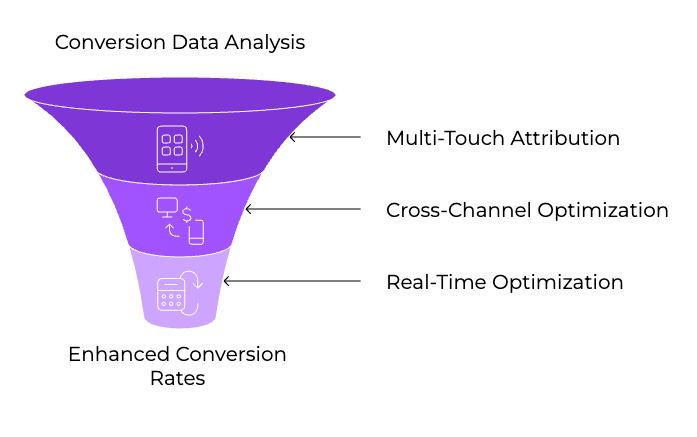
Multi-Touch Attribution Implementation
Research indicates that high-value conversions differ significantly from low-value conversions in terms of channel usage and customer journey patterns. Price comparison sites and email marketing consistently show greater importance in driving high-value conversions compared to low-value transactions.
Cross-Channel Budget Optimization
Studies analyzing cross-channel performance reveal:
- Returning customers represent a slightly greater share in high-value conversions
- Multi-channel attribution models provide insights into non-conversions as well as successful conversions
- Algorithmic attribution models can identify optimal budget allocation strategies that significantly outperform traditional approaches
Real-Time Optimization Capabilities
Modern attribution platforms enable:
- Instant budget reallocation based on real-time performance data
- AI-driven credit allocation across touchpoints using machine learning algorithms
- Unified dashboard management of all conversion events and attribution models
Privacy Regulations Impact on Attribution Accuracy
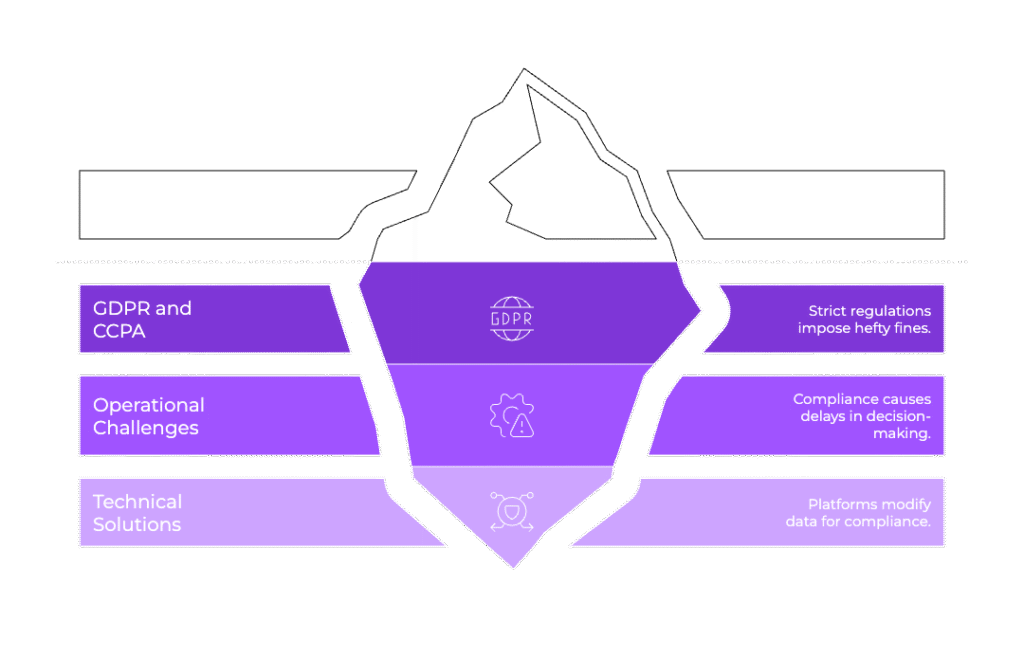
Global Regulatory Landscape
Privacy regulations are fundamentally changing attribution practices:
- GDPR penalties don’t mess around. They can climb as high as €20 million or 4% of a company’s global revenue, whichever hits harder. Meanwhile, the CCPA brings its own weight, slapping businesses with hefty fines, especially when data breaches are involved.
- 83% of organizations ranging from $50 million to $5+ billion in annual revenue actively measure privacy program effectiveness
Operational Impact of Compliance
Privacy regulations create significant operational challenges:
- Delayed decision-making due to extensive approval processes for data usage
- Legal team involvement required for every data-related decision
- Bureaucratic delays often render insights outdated by the time they’re cleared for use
Technical Solutions for Compliance
Advanced attribution platforms address compliance through:
- Server-side data modification before transmission to third-party platforms
- Geographic data processing ensuring data doesn’t leave collection territories
- First-party data strategies reducing reliance on third-party cookies
Financial Modeling and ROI Optimization
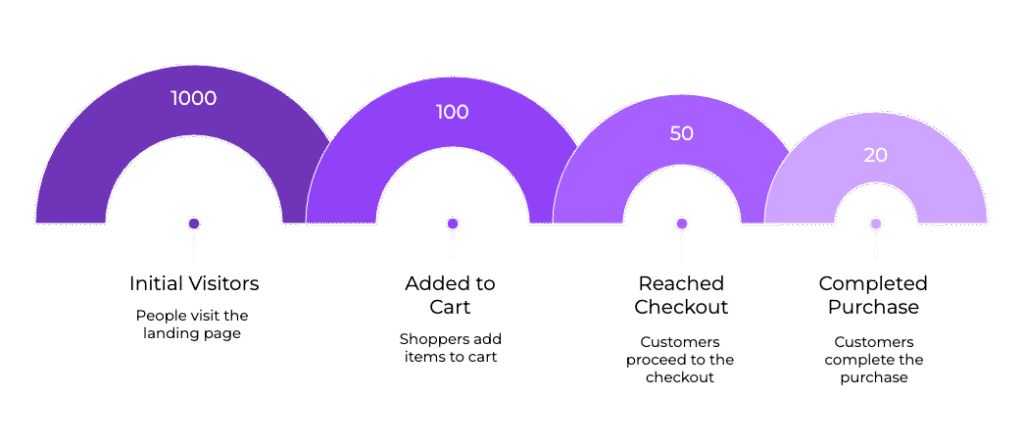
Conversion Rate Optimization Returns
Research on conversion rate optimization reveals it’s often the highest ROI activity for growing brands. Industry standard conversion rates range from 2% to 5%, with significant variation by sector. Companies implementing systematic CRO strategies can reduce customer acquisition costs while increasing conversion rates simultaneously.
Attribution Model Investment Justification
Financial analysis of attribution model implementation shows:
- Enterprise implementations require initial setup investments but provide ongoing ROI through improved budget allocation
- Computation time considerations must be balanced against accuracy improvements for real-time applications
- Scalability benefits increase with data volume and campaign complexity
Long-Term Revenue Impact
Longitudinal studies of attribution implementation demonstrate:
- Revenue attribution accuracy improves by 20-30% with advanced multi-touch models
- Budget allocation efficiency gains compound over time as models learn from additional data
- Cross-channel synergies become more apparent with comprehensive attribution coverage
Future-Proofing Attribution Strategies
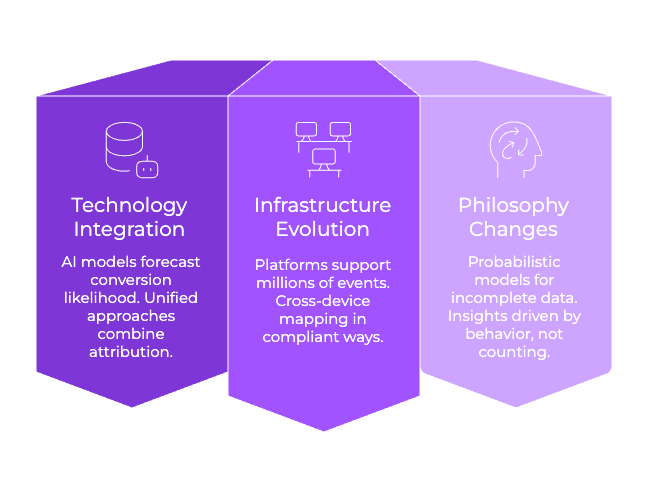
Emerging Technology Integration
The future of attribution involves:
- AI-driven predictive attribution models that forecast conversion likelihood
- Unified measurement approaches combining attribution with media mix modeling
- Real-time adaptation to behavioral changes and market conditions
Technical Infrastructure Evolution
Advanced attribution platforms must support:
- Millions of events per second processing for enterprise scalability
- Cross-device journey mapping in privacy-compliant ways
- Integration with emerging platforms and advertising channels
Measurement Philosophy Changes
The industry is shifting toward:
- Probabilistic attribution models for incomplete data scenarios
- Behaviorally-driven insights rather than simple conversion counting
- Proactive optimization instead of retrospective reporting
Conclusion: The Path Forward
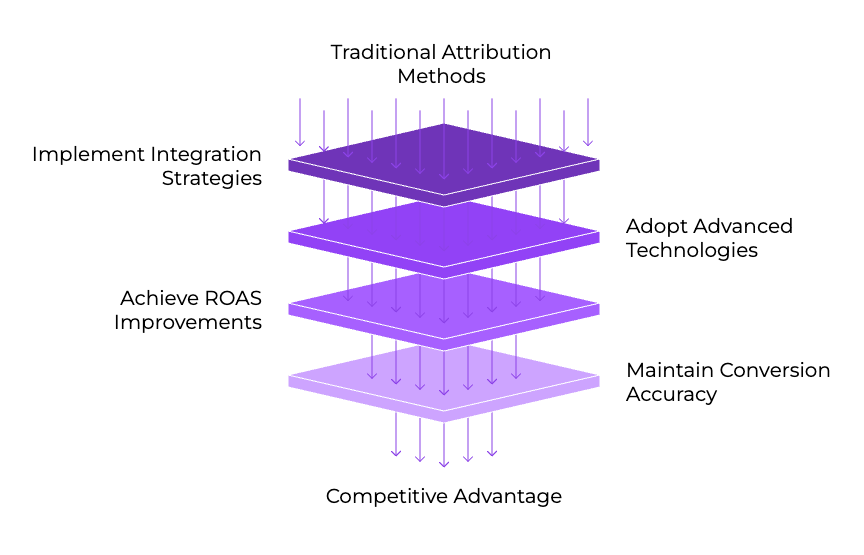
The research clearly demonstrates that traditional attribution methods are insufficient for modern marketing complexity. With global digital ad spend approaching $800 billion and data loss rates reaching 75%, the financial imperative for advanced attribution solutions has never been clearer.
Organizations implementing comprehensive integration strategies with platforms like Trackity.com are seeing 41% ROAS improvements while maintaining 99.9% conversion accuracy. The combination of server-side tracking, AI-driven attribution, and real-time optimization represents the current state-of-the-art in marketing measurement.
The competitive advantage lies not just in adopting these technologies, but in implementing them systematically with proper integration frameworks that unify data across all advertising platforms and customer touchpoints. As privacy regulations continue to evolve and ad platforms increase in complexity, the organizations that invest in comprehensive attribution infrastructure today will maintain measurement accuracy while competitors struggle with fragmented, incomplete data.

